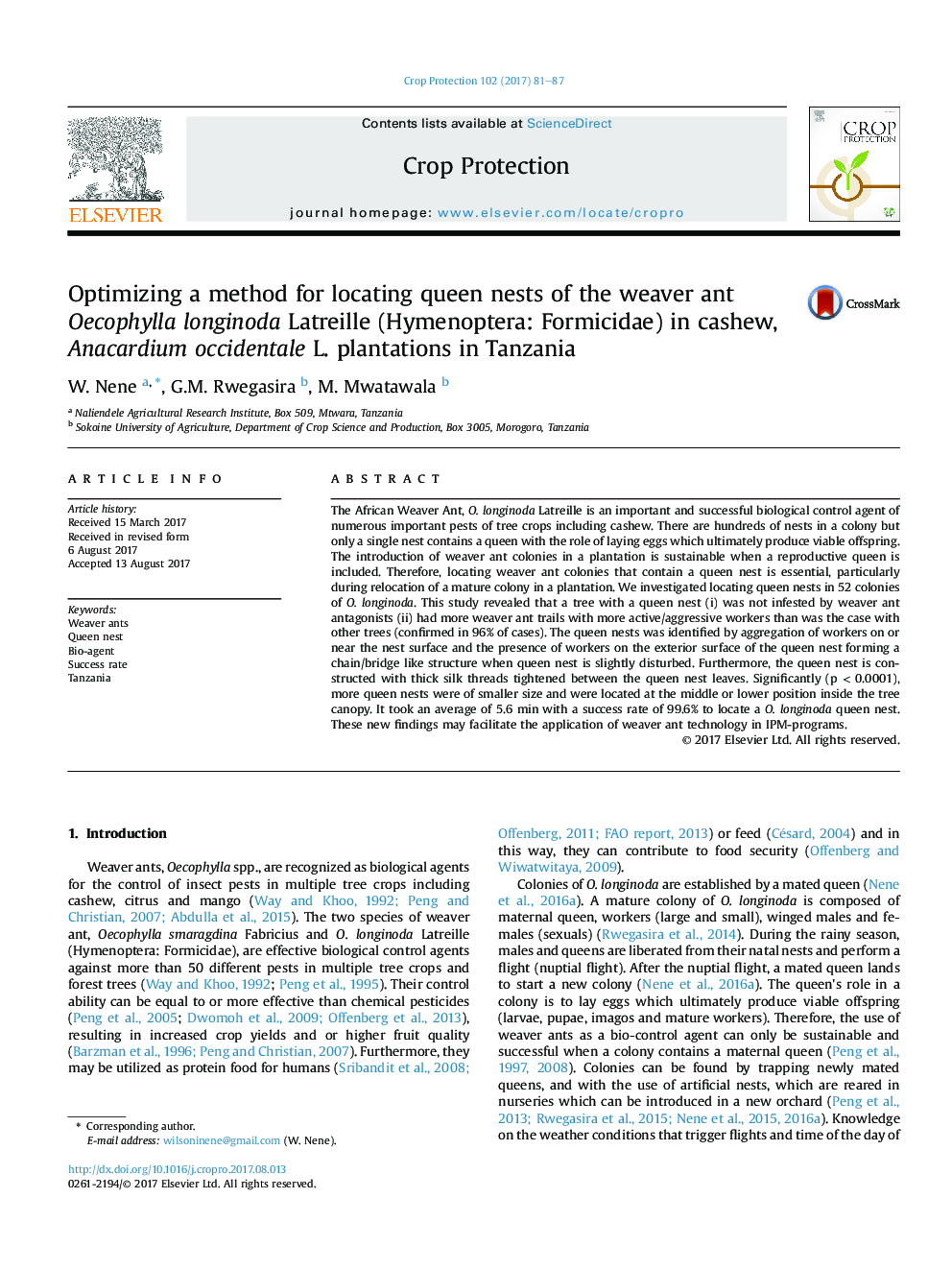| Article ID | Journal | Published Year | Pages | File Type |
|---|---|---|---|---|
| 5761010 | Crop Protection | 2017 | 7 Pages |
Abstract
The African Weaver Ant, O. longinoda Latreille is an important and successful biological control agent of numerous important pests of tree crops including cashew. There are hundreds of nests in a colony but only a single nest contains a queen with the role of laying eggs which ultimately produce viable offspring. The introduction of weaver ant colonies in a plantation is sustainable when a reproductive queen is included. Therefore, locating weaver ant colonies that contain a queen nest is essential, particularly during relocation of a mature colony in a plantation. We investigated locating queen nests in 52 colonies of O. longinoda. This study revealed that a tree with a queen nest (i) was not infested by weaver ant antagonists (ii) had more weaver ant trails with more active/aggressive workers than was the case with other trees (confirmed in 96% of cases). The queen nests was identified by aggregation of workers on or near the nest surface and the presence of workers on the exterior surface of the queen nest forming a chain/bridge like structure when queen nest is slightly disturbed. Furthermore, the queen nest is constructed with thick silk threads tightened between the queen nest leaves. Significantly (p < 0.0001), more queen nests were of smaller size and were located at the middle or lower position inside the tree canopy. It took an average of 5.6 min with a success rate of 99.6% to locate a O. longinoda queen nest. These new findings may facilitate the application of weaver ant technology in IPM-programs.
Keywords
Related Topics
Life Sciences
Agricultural and Biological Sciences
Agronomy and Crop Science
Authors
W. Nene, G.M. Rwegasira, M. Mwatawala,
